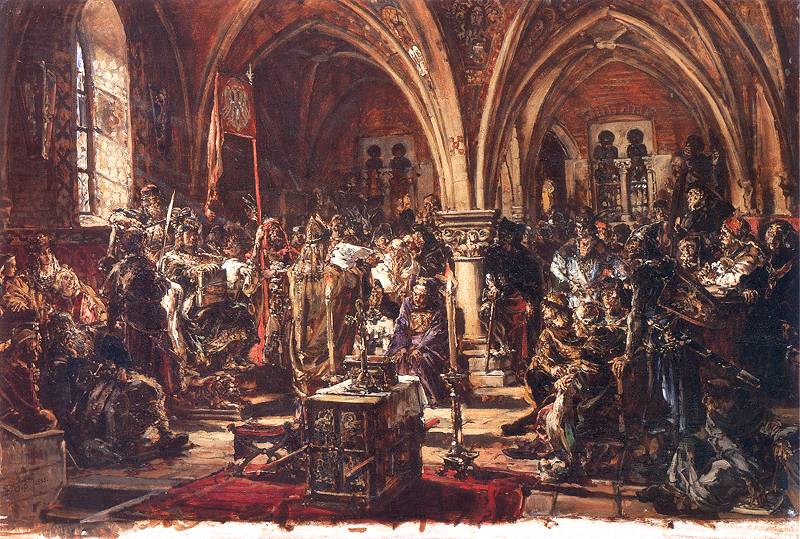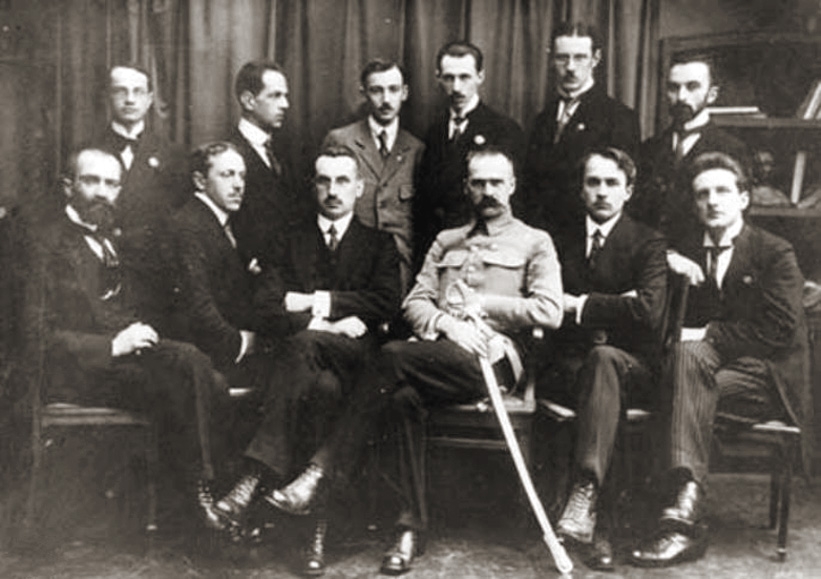|
Adam Próchnik
Adam Feliks Próchnik (; Lwów, 21 August 1892 – 22 May 1942, Warsaw) was a Polish socialist activist, politician and historian. Life Próchnik was born in Lwów, Austrian partition (now, Lviv, Ukraine) on 21 August 1892 to a middle class Jewish family.Krzysztof Dunin-Wąsowicz, ''Adam Próchnik (1892-1942)'', in Peter Brock, John D. Stanley, Piotr Wróbel (ed.), ''Nation and history: Polish historians from the Enlightenment to the Second World War'', University of Toronto Press, 2006, Google Print, p.443-447/ref> His mother, née Felicja Nossig, was the sister of the sculptor and Zionism, Zionist activist Alfred Nossig. According to some sources, he was the Legitimacy (family law), extramarital son of the Polish socialist Ignacy Daszyński.Jerzy Myśliński, ''Polska myśl polityczna'', Czytelnik, 1986, , p.32 While in high school he became involved in socialist activism. As a student, he joined the Polish Social Democratic Party of Galicia; he supported the Polish Socialist Pa ... [...More Info...] [...Related Items...] OR: [Wikipedia] [Google] [Baidu] |
Sejm
The Sejm (), officially known as the Sejm of the Republic of Poland (), is the lower house of the bicameralism, bicameral parliament of Poland. The Sejm has been the highest governing body of the Third Polish Republic since the Polish People's Republic, transition of government in 1989. Along with the upper house of parliament, the Senate of Poland, Senate, it forms the national legislature in Poland known as Parliament of Poland#National Assembly, National Assembly (). The Sejm comprises 460 Member of parliament, deputies (singular or ) elected every four years by Universal suffrage, universal ballot. The Sejm is presided over by a Speaker of parliament, speaker, the "Marshal of the Sejm" (). In the Kingdom of Poland (1385–1569), Kingdom of Poland, the term ''Sejm'' referred to an entire two-Chambers of parliament, chamber parliament, comprising the Chamber of Deputies (), the Senate and the King. It was thus a three-estate parliament. The 1573 Henrician Articles strengthe ... [...More Info...] [...Related Items...] OR: [Wikipedia] [Google] [Baidu] |
Alfred Nossig
Alfred Nossig (18 April 1864 – 22 February 1943) was a Jewish sculptor, writer, and activist in Zionism and Polish civil society. During World War II, he was held in the Warsaw Ghetto. Other Jews later accused Nossig of collaborating with the Gestapo. Jewish partisans confronted Nossig in his apartment, demanding answers for the accusations. While being questioned, Nossig fell to his knees and begged for his life, threatening them that the Germans would retaliate if he was killed. Undeterred, the partisans executed him. After searching his body, they found German documents. Nossig was a eugenicist who believed in the "biological superiority" of Jews. Biography Alfred Nossig was born to a wealthy family in Lemberg (now Lviv), then part of the Austrian Empire (now Ukraine). Nossig's father exposed him to German culture and was an activist for Jewish rights in Galicia, serving as secretary of the Jewish community there. In the early 1880s, Polish romanticism inspired Nossig to ... [...More Info...] [...Related Items...] OR: [Wikipedia] [Google] [Baidu] |
Battle Of Lemberg (1918)
The Battle of Lemberg (Lviv, Lwów) (in Polish historiography called ', the Defense of Lwów) took place from November 1918 to May 1919 in the region of Galicia following the dissolution of the Austro-Hungarian Empire. The battle, for control over the city of Lviv, was fought between forces of the local West Ukrainian People's Republic and urban Polish resistance, assisted later by the invading Polish military. The battle sparked the Polish-Ukrainian War, ultimately won by Poland as both nations fought the Ukrainian-Soviet War and Polish-Soviet Wars concurrently. Background The modern city of Lviv was called ''Lviv'' by the Ukrainians, ''Lwów'' by the Poles, and ''Lemberg'' by the Austrians and is the largest city in the historical region of eastern Galicia. According to the Austrian census of 1910, which listed religion and language, 52% of the city's population were Roman Catholics, 31% Jews, and 15% were Greek Catholics. Linguistically, 86% of the city's population us ... [...More Info...] [...Related Items...] OR: [Wikipedia] [Google] [Baidu] |
Carpathian Campaign
The Carpathian Front, sometimes referred to as the Carpathian Winter War, of 1915 was one of the largest military operations on the Eastern Front in terms of scale, duration, the number of troops involved in it and the losses of the parties. Background Having repulsed the counteroffensive of the Austro-Hungarian troops in late December 1914 - early January 1915, the Russian armies of the left flank of the Southwestern Front (8th and 11th) went on the offensive and again reached the Beskids, part of the passes of the main Carpathian ridge and captured almost throughout Bukovina. At the same time, the armies of the Northwestern Front, although they firmly occupied the positions to which they were withdrawn in early December (the lines of the Bzura, Pilica and Rawka rivers), they could not seize the initiative and go on the offensive against the German troops of the 9th Army. The headquarters of the Supreme Commander Cavalry General Grand Duke Nikolai Nikolayevich (Chief Inf ... [...More Info...] [...Related Items...] OR: [Wikipedia] [Google] [Baidu] |
5th Legions' Infantry Regiment
5th Legions Infantry Regiment of Józef Piłsudski (, abbreviated to 5 pp Leg.) was an infantry regiment of the Polish Army in 1918–1939. It was garrisoned in Vilnius as part of the 1st Legions Infantry Division. Formation In the final days of October 1918 in Kraków, officers and soldiers of the former Polish Legions, commanded by Captain Michał Karaszewicz-Tokarzewski, decided to form an Infantry Regiment, in order to help Polish defenders of the city of Lwów, besieged by the Ukrainians. Polish–Ukrainian War On November 10, 1918, the regiment's first battalion, under Major Julian Stachiewicz, left Kraków for Przemyśl, to be immediately involved in heavy fighting against the Ukrainians. By November 12, Przemyśl was completely in Polish hands, so the regiment's battalions were sent to Lwów. By November 22, the enemy was pushed out of the city. Fighting around Lwów continued until early spring 1919, and the regiment remained in the area of the city until March/A ... [...More Info...] [...Related Items...] OR: [Wikipedia] [Google] [Baidu] |
Polish Military Organisation
The Polish Military Organisation, PMO (, POW) was a secret military organization that was formed during World War I (1914–1918). Józef Piłsudski founded the group in August 1914. It adopted the name ''POW'' in November 1914 and aimed to gather intelligence and to sabotage the enemies of the Polish people. Piłsudski used it to act independently from his cautious Austro-Hungarian supporters, and it became an important, if somewhat lesser known, counterpart to the Polish Legions. Its targets included the Russian Empire in the early phase of the war and the German Empire later. Its membership rose from a few hundred in 1914 to over 30,000 in 1918. History Intelligence and training The Polish Military Organization (PMO) can be traced to formations of August 1914 or even earlier, but it was officially founded in November 1914 as a merger of two previously existing youth para-military organisations: the Polish Rifle Squads and the Riflemen's Association. Active in the Russian-he ... [...More Info...] [...Related Items...] OR: [Wikipedia] [Google] [Baidu] |
Imperial-Royal Landwehr
The Imperial-Royal Landwehr ( or ''k.k. Landwehr''), also called the Austrian Landwehr, was the territorial army of the Cisleithanian or Austrian half of the Austro-Hungarian Empire from 1869 to 1918. Its counterpart was the Royal Hungarian Landwehr (''k.u. Landwehr''). The two ''Landwehrs'', together with the Common Army and the Imperial and Royal Navy, made up the Austro-Hungarian Army, armed forces (''Bewaffnete Macht'' or ''Wehrmacht'') of Austria-Hungary. While the name, "Imperial-Royal", might seem to suggest a link between the "Imperial" (Cisleithania, Cisleithanian) and "Royal" (Transleithania, Transleithanian or Hungarian) halves of the Empire, in this context "Royal" actually refers to the Kingdom of Bohemia (''Königreich Böhmen'' or ''České království)'' - not a sovereign kingdom on par with the Kingdom of Hungary, but a Crown land (Austria), crownland of Cisleithanian Austria-Hungary and possession of the Habsburgs, who remained formally entitled to kingship''.'' ... [...More Info...] [...Related Items...] OR: [Wikipedia] [Google] [Baidu] |





